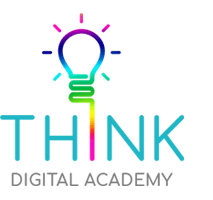Spoiler alert: Your kid’s brain is doing just fine.
“But what about all that screen time?”
It’s the question haunting every parent of an online student. The one your mother-in-law whispers at Sunday lunch. The concern that keeps you scrolling parenting forums at midnight.
Here’s what nobody’s telling you: neuroscience doesn’t back up the screen time panic. What research actually shows is that screens aren’t frying your child’s brain. What matters is what they’re doing on those screens.
Not all screen time is created equal
Most “screen time” research lumps everything together: TikTok doom-scrolling = live classroom discussions = educational games = staring blankly at YouTube. It’s like saying “food” and treating birthday cake and broccoli as identical.
Dr Michael Rich, director of the Centre on Media and Child Health at Boston Children’s Hospital, says it best: “Asking if screen time is bad for kids is like asking if food is bad. It depends entirely on what kind.”
The distinction that matters? Passive consumption versus active engagement. Mindless versus purposeful. Isolated versus connected.
What’s actually happening in your kid’s brain
When students engage in active online learning such as discussing, problem-solving, creating, their brains light up. Functional magnetic resonance imaging (fMRI) studies show activation in the prefrontal cortex (critical thinking), hippocampus (memory) and temporal lobe (language processing).
Even better: interactive digital learning activates additional neural pathways for spatial reasoning and hand-eye coordination. Students aren’t just learning content, they’re developing digital literacy, a form of multiliteracy that includes navigating complex interfaces, evaluating information and communicating across platforms.
A 2023 study in Frontiers in Psychology found students in well-designed online environments showed equal or superior executive function development compared to traditional students. Key words: well-designed. Not all online learning is equal, just like not all schools are equal.
The real threats (hint: not screens)
While everyone panics about screens, science points to completely different culprits:
Chronic stress literally shrinks the hippocampus and blocks neuroplasticity. High-pressure traditional school environments keep cortisol levels elevated for hours, disrupting memory and emotional regulation.
Sleep deprivation from rigid schedules that ignore teenage circadian rhythms devastates cognitive function. One extra hour of sleep improves academic performance more than any educational intervention studied.
Social isolation triggers the same brain regions as physical pain. Plot twist: many students report feeling more connected in thoughtfully designed online environments than sitting silently in rows of desks.
Lack of autonomy suppresses dopamine and kills intrinsic motivation. When students have no choice in what, when or how they learn, their brains literally check out.
The attention span myth
That viral claim about goldfish having longer attention spans than today’s students? Based on a misinterpreted Microsoft study that never actually studied attention spans.
What has changed is selective attention – the ability to filter signal from noise in information-rich environments. This isn’t a deficit; it’s an adaptation. Today’s students have developed sophisticated filtering mechanisms to navigate complex digital landscapes and rapidly assess information quality.
Dr Adam Gazzaley, neuroscientist at UC San Francisco, argues that what adults perceive as shortened attention is actually enhanced selective attention. Students aren’t losing focus – they’re becoming more discerning about what deserves it.
The neuroplasticity advantage
Here’s the kicker: the human brain doesn’t distinguish between “natural” and “technological” learning. Neuroplasticity doesn’t care. What matters is engagement, challenge and meaningful practice.
Digital learning offers something traditional classrooms struggle with: immediate feedback loops. Instant feedback strengthens neural pathways through rapid reinforcement.
Interactive simulations let students manipulate variables and observe consequences in real-time. You can’t dissect a frog twenty times in biology class, but you can digitally – each iteration strengthening procedural memory without physical limits.
Multimedia learning, designed according to cognitive load theory, actually reduces mental effort compared to text-only instruction. Dual coding-processing through visual and verbal channels, creates redundant neural pathways that boost retention.
What parents should actually focus on
Forget the screen time counter. Ask better questions:
- Is it active or passive? Are they creating, problem-solving and collaborating or just clicking through content?
- Is it social or isolating? Are there meaningful peer interactions or are they alone with a computer?
- Is it engaging or soul-crushing? Does learning spark curiosity or dread?
- Is there balance? Room for physical activity, hands-on learning, offline experiences?
These questions matter infinitely more than hours on a screen.
The bottom line
Your child’s brain isn’t being damaged by quality online education. It’s being prepared for a world where digital fluency is as fundamental as reading.
The students who’ll thrive tomorrow aren’t those who avoided screens; they’re those who learned to use screens as tools for creation, connection and continuous learning. Students who developed self-regulation, digital citizenship and independent learning skills. Students who discovered education isn’t something done to them in a building, but something they can access anywhere, anytime.
The screen time panic is a distraction. The real questions are: Is this meaningful? Is my child engaged? Are they developing the skills they’ll actually need?
When the answers are yes, screens aren’t the problem. They’re the future.
Free trial
Ready to see what brain-friendly online learning looks like? At Think Digital Academy, we don’t just stick traditional school on a screen – we’ve reimagined education for how young minds actually work. Why not try our online learning environment by enroling for our free 14 day trial. Discover why our students are thriving academically, socially and neurologically.



